Using the camera’s metering, with the ISO set at 100, at fully opened aperture of f/3.5, the outside view required a shutter speed of 1/20 sec – on the limit for hand held shooting. The overall reading inside required 1/15 sec, with the area around the reading lamp requiring 1/10 sec. Darker areas (near the TV for example) required 1/2 sec. As an aside, with my wife’s daylight lamp on (used for her sewing), a speed of 1/80 sec was read, even though the lamp seems to be much softer than the other lights.
The following images were taken in our house in a variety of lighting and White Balance conditions:
For the first set of three, the normal ‘low energy lamps’ have been changed for tungsten lamps. They were taken as the strength of the internal lights overcame that outside.
Tungsten lights – Auto WB (2800 oK)
Tungsten lights – Daylight WB (5000 oK)
Tungsten lights – Tungsten WB (3000 oK)
The camera has decided that the tungsten lighting is the dominant one, so the colours are very close to that in the tungsten WB image. The white balance has compensated for the tungsten light, so the sky outside has become more ‘cyan / yellow’. This is also true for the third image, but to a slightly lesser degree. In the second image, the inside light has now become much more yellow / orange – much darker than we perceive it to be.
For the next three images, the tungsten lamps have been replaced by CFL lamps, which are our ‘normal’ type these days. The D300s has several potential variations in white balance, so I used ‘Auto, followed by Fluorescent-warm white, the Fluorescent-cool white settings.
CFL lamps – Auto WB (2850 oK)
CFL lamps – Fluorescent-Warm White WB (3000 oK)
CFL lamps – Fluorescent-Cool White WB (4200 oK)
The first thing that struck me about these lamps is the lack of tonality in the image. It seems to be really flat. The next thing to notice is the loss of patterns on the ceiling, from the tungsten lamp filaments, so the CFL light may seem brighter and it’s definitely more energy efficient, but there’s a loss in depth and contrast with it – not to mention the patterns. I’m sure these qualities will be useful somewhere.The White Balance which most closely matches the colours in the room (ornaments, paintings, pig etc.) is the Fluorescent Warm White.
Another point to notice is that the pig sleeps through everything!
The next three images are of the kitchen which is lit by fluorescent ring lamps in the spots and CFL over the hob. I’ve used the same settings as the previous three images.
Fluorescent Auto WB (2750 oK)
Fluorescent Warm white WB (3000 oK)
Fluorescent – Cool white WB (4200 oK)
The compensation of the white balance here doesn’t have as much an effect as the previous three images. Maybe it’s the difference in types of light, but the images are much more pleasing and seem to have more depth and colour range. It’s interesting to see the compensation of different white balance settings for fluorescent lighting. The range on the D300s goes from sodium vapour lamps at 2700 oK with 7 different settings up to mercury vapour lamps at 7200 oK. Obviously some care needs to be taken to decide the type of lamps when adjusting the balance.
It seems to me that the automatic white balance does a pretty good job which can be modified later, if required, using Adobe Lightroom.
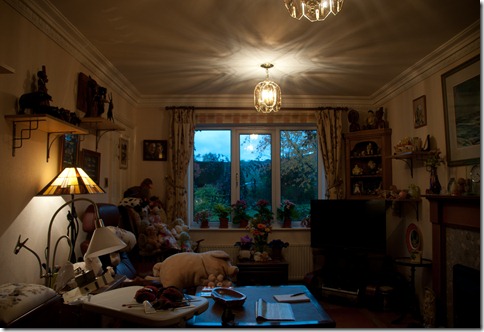
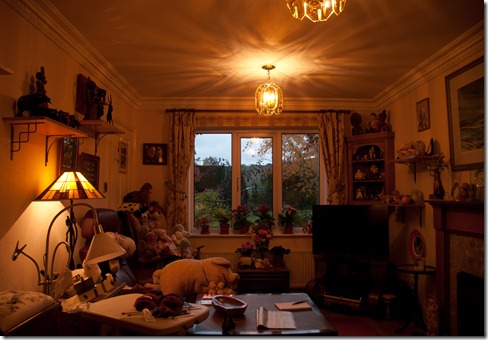
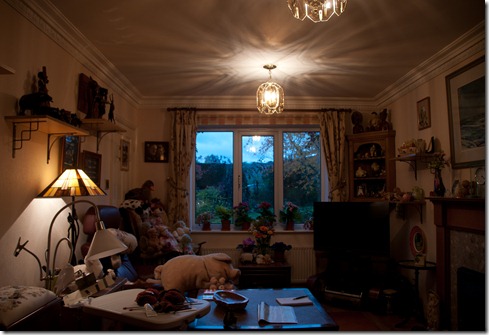
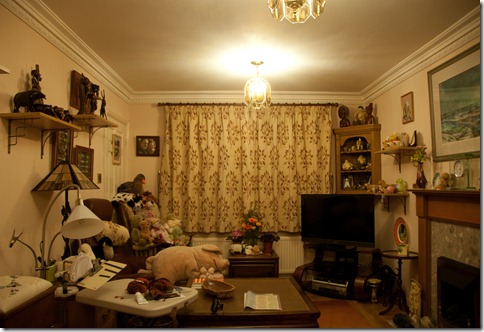
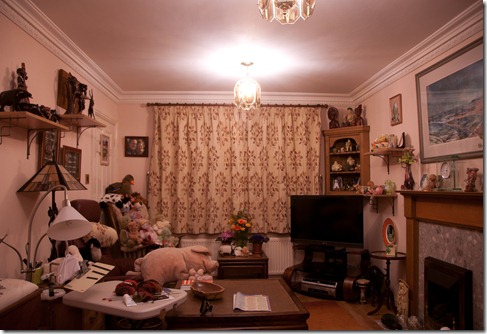
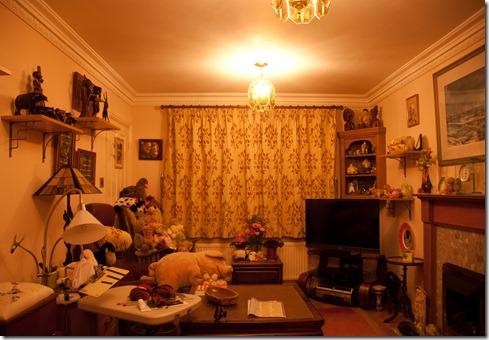
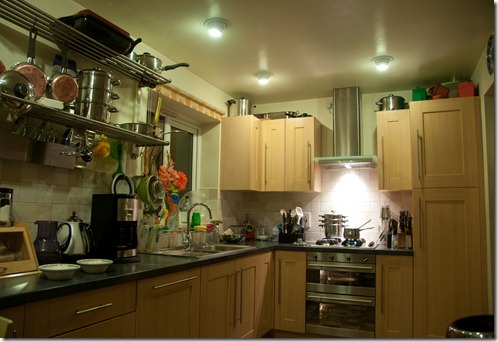
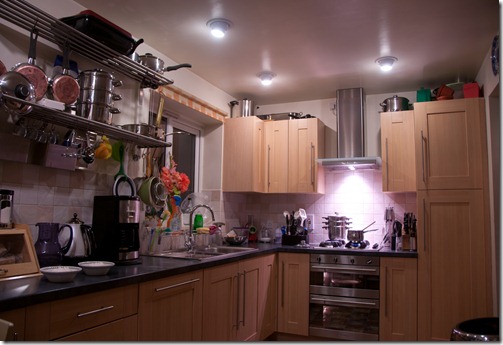
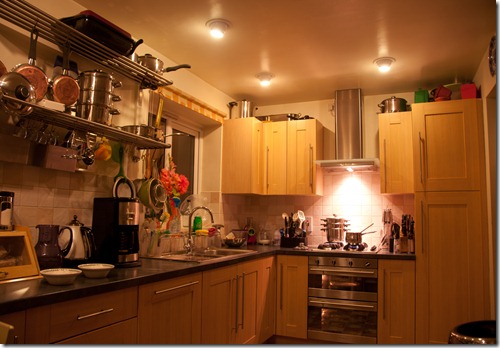
No comments:
Post a Comment